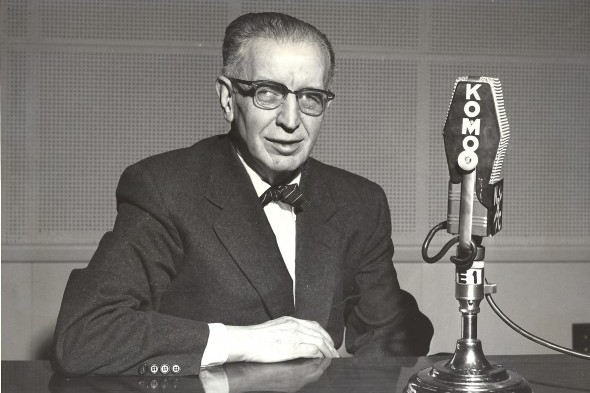
By David Eskenazi and Steve Rudman
Seattle’s Lincoln High School dates to 1907, when it opened with 900 students, who came from the fast-growing University, Latona, Ravenna, Green Lake, Fremont, Queen Anne and Wallingford neighborhoods. Until 1981, when the school closed due to declining enrollment, Lincoln ranked among the most important educational/athletic institutions in the Seattle area, a segue into the exercise at hand.
In a series of periodic looks at Seattle-area high schools, Wayback Machine is attempting to identify the most significant athletic figure in Lincoln’s storied history. As with the others in the series, the individual might be an athlete, coach, administrator, mover-and-shaker at large, or even a journalist. The only qualifier: The school must boast at least a half-dozen distinguished sports graduates among its population of outstanding alums.
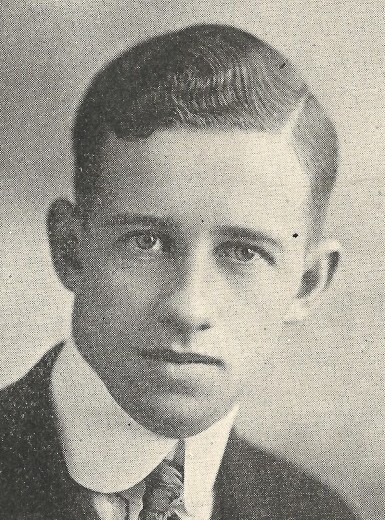
As with Franklin, Garfield, Roosevelt and Queen Anne among the schools previously profiled, Lincoln dispatched an impressive array of same into the world.
Roberta Byrd Barr became a well-known personality for moderating a popular local television program, “Face to Face.” In 1973, she served as Lincoln’s principal — the first woman and first African American to work as a principal in the Seattle School District.
Eddie Carlson made a name as a Seattle business executive (CEO of United Airlines) and tireless civic leader. He chaired the World’s Fair Commission, the organizing muscle behind the 1962 Century 21 Exposition, and gave Seattle its most famous landmark. Inspired by the Stuttgart Tower in Germany, a sketch Carlson scribbled on a napkin became the Century 21 Exhibition’s most enduring icon, the Space Needle.
After his Lincoln days, William Franklin Devin served in an Army ambulance unit during World War I and later received his law degree from the University of Washington. He was elected mayor of Seattle three times starting in 1942 and led the city’s transition from a war-time to a peace-time economy as thousands of military personnel returned to the West Coast.
In 1953, Warren Littlejohn became the first African-American high-school teacher in Seattle School District, guiding students through the intricacies of language arts.
Dorothy Provine graduated from the University of Washington with a degree in theater arts and hit the silver screen in 1958 with the release of The Bonny Parker Story. Provine went to appear on scores of movies and TV shows. She was part of the zaniness in It’s a Mad, Mad, Mad, Mad World (1963) as Milton Berle’s wife; appeared as Jack Lemmon’s better half in Good Neighbor Sam (1964); played Hayley Mills’s older sister That Darn Cat! (1965); had a part in Who’s Minding the Mint? (1967); and made her last film appearance alongside Dick Van Dyke in Never a Dull Moment (1968).

Norma Zimmer became a popular American vocalist and is best remembered for her 22-year tenure, starting in 1960, as Lawrence Welk’s “Champagne Lady” on the Lawrence Welk Show. She appeared on most of the popular TV variety shows during the 1950s. She provided the singing voice for the White Rose in the Disney film Alice in Wonderland (1951). Zimmer also sang with a quartet, “The Girlfriends,” that provided backup for Frank Sinatra, Dean Martin, Perry Como, and others. The group also sang backup for Bing Crosby’s “White Christmas.”
Lincoln enjoyed much of its athletic success under coach Bill Nollan, who compiled a 104-63-18 record in football from 1929 through 1955. Overall, Nollan won 22 city titles in four sports. In track, Lincoln did not lose a dual meet from 1930 to 1945 and won 10 city championships.
Listed alphabetically, the following are the most decorated Lincoln alums whose careers were largely, if not entirely, sports-based. At the end of this Wayback Machine, we’d like you to submit your choice for the most prominent,then leave a comment explaining your reasoning.
Don Coryell (football): Coryell didn’t leave much of a mark as a football player, lettering only in 1949 as a defensive back during his time with the Washington Huskies. He had an equally modest start to his coaching career.
Armed with two degrees from UW, Coryell began at the high school level in Hawaii, and then whisked through the University of British Columbia, Wenatchee Valley College, and even put in a stint with a military team at Fort Ord, CA., before landing his first head gig at Whittier College in 1957. After winning two conference titles in three years, while pioneering the I formation, Coryell joined John McKay’s staff at USC in 1960.

That led to a stint at San Diego State from 1961-72, where Coryell compiled a record of 104-19-2 and had undefeated seasons in 1966, 1968 and 1969. Coryell won three bowl games with the Aztecs and began his NFL career with the St. Louis Cardinals in 1973.
Coryell’s greatest success came with the San Diego Chargers from 1978-86, where his “Air Coryell” offense led the NFL in passing seven of eight seasons while featuring such dynamic performers as Dan Fouts, Kellen Winslow, Charlie Joiner and Wes Chandler.
Coryell, the only coach to win more than 100 games at the college and pro levels, entered the College Football Hall of Fame in 1999 and four times has been a semifinalist for the Pro Football Hall of Fame.
Ray Eckman (football): A quarterback/halfback at Lincoln, Eckman earned All-City honors from 1916-18 before starring for the Washington Huskies under Enoch Bagshaw, serving as team captain in 1922.
Following his playing career, Eckman became a successful U-District haberdasher. In 1936, he was appointed Huskies athletic director, a position he held until 1942, when he resigned to resume a career in the clothing business. Eckman served two terms on the Seattle City Council in the mid-1960s.
One of Eckman’s notable accomplishments during his time as UW athletic director: He spearheaded fundraising efforts to send the 1936 eight-oared crew to the Berlin Olympic Games. Coached by Al Ulbrickson, the crew rallied from last place to defeat favored Germany and Italy to win the gold medal.
Harry Givan (golf): Givan made All-City in baseball three times and in basketball twice while representing Lincoln, but had his longest-lasting success as a golfer and Pacific Northwest golf pioneer.

In addition to playing baseball and basketball, Givan became a member of the Lincoln golf team after purchasing clubs he bought with money he made boxing under an assumed name.
He won the Pacific Northwest Amateur five times and the Seattle Amateur four times. In 1945, Givan created the Seattle Open and not only served as the tournament director, but finished second to Byron Nelson at the Broadmoor Country Club.
The 1945 Seattle Post-Intelligencer Man of the Year, Givan played on two U.S. Walker Cup teams and counted the 1936 Washington State Open and 1942 Northwest Open among his biggest wins. He also prevailed in exhibition matches against Sam Snead, Bobby Jones and Byron Nelson.
An insurance executive, Givan joined a group of businessmen a decade after his Man of the Year selection and helped them secure funding and land for Northwest Hospital in North Seattle.
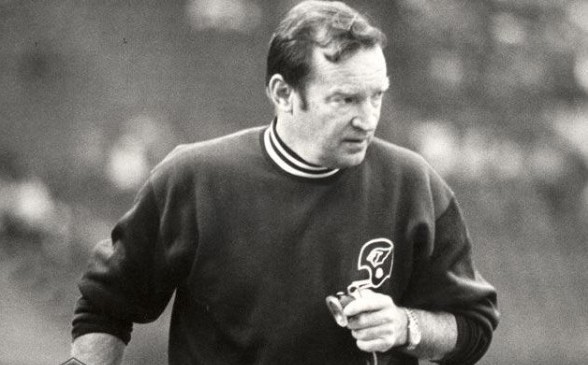
Leo Lassen (broadcasting): Lassen (1899-75) tried out for the Lincoln baseball team, but wasn’t good enough to make it, in part due to a crooked arm that he acquired in a boyhood accident. After graduation, Lassen went to work at The Seattle Post-Intelligencer as a copy boy, and later joined the long-gone Seattle Star (1899-47), where he rose to sports editor in 1919 and managing editor in 1928.
In 1930, America in the grip of the Great Depression, The Star pink-slipped Lassen and other staffers in a cost-cutting measure. Lassen eventually found work with Seattle’s International News Service bureau and became a part-time publicist, landing as one of his first clients the Seattle Indians of the Pacific Coast League.
That eventually led to Lassen becoming the club’s broadcaster, a position he held for more than 30 years.
Lassen’s style became a major part of his allure. He had a rapid-fire, almost staccato delivery that resonated with listeners once they got used to it, which took some doing. John Owen, who succeeded Royal Brougham as the Post-Intelligencer’ sports editor, wrote in a 1994 column that he could barely understand Lassen when he first heard him on the radio. But that once he understood what Lassen was saying, he could appreciate Lassen’s appeal and understood why Lassen had become an unforgettable part of the community fabric.
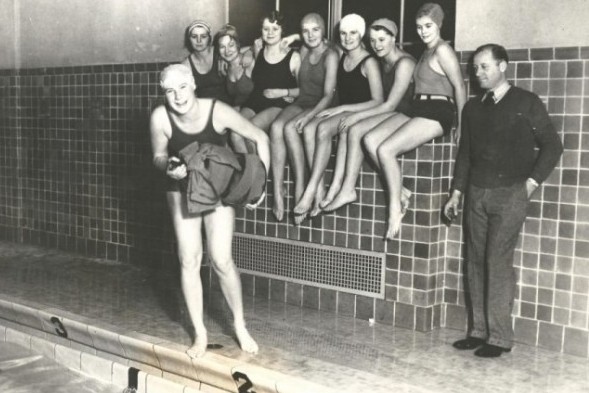
Youngsters imitated Lassen’s pet phrases. He was an encyclopedia of baseball facts and his memory of baseball lore was phenomenal. His dramatic broadcasts helped the Rainiers set attendance records because he created interest and always urged his legion of listeners to go to the ballpark whenever they could.
Helene Madison (swimming): A 1931 Lincoln grad, Madison became the premier female swimmer in the world in the early 1930s, setting 26 world records between 1930-32. She won every AAU freestyle title available in 1930, 1931 and 1932, capping her career that year with three gold medals and three world marks in the Los Angeles Olympic Games.
Madison, whose golds came in the 100 freestyle, 400 freestyle and 4×100 freestyle relay, retired after the 1932 Games to pursue a career as an actress and nightclub singer. She also gave swimming exhibitions, which erased her amateur status.
When Madison returned to Seattle after her gold-medal sweep in Los Angeles, she was feted with a downtown parade that drew more than 200,000. Madison entered the U.S. Olympic Hall of Fame in 1992.

Jack Medica (swimming): After leaving Lincoln, Medica came to prominence at the University of Washington, where he won nine national collegiate titles, including the 220, 440 and 1,500-meter freestyle races three years in a row. During his pre-Olympic career, Medica set 11 world records in various distances and won 17 national AAU crowns, indoors and outdoors. Medica’s nine NCAA titles stood as the record for 41 years (not broken until 1977).
At the 1936 Berlin Olympics, Medica won a gold (400 freestyle) and two silver (1,500 freestyle and 4×200 freestyle relay) medals.
During his time at Washington, Medica won a letter sweater from the University of Michigan because he took so many points away from Yale and Iowa that the Wolverines were able to win the NCAA team championship.
Following his competitive career, Medica coached at Columbia and Penn. He entered the International Swimming Hall of Fame in 1966.
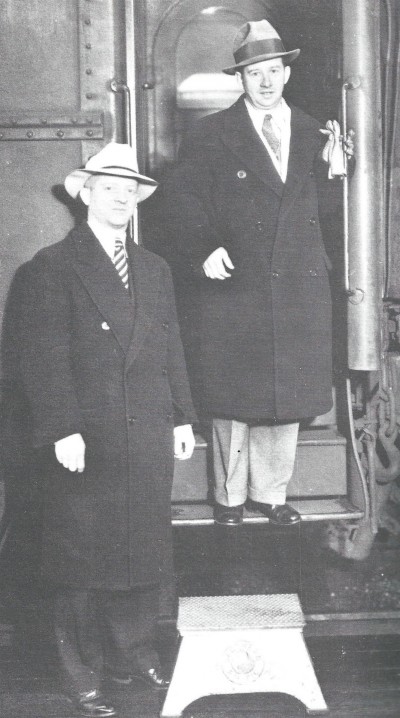
Darwin Meisnest (athletic management): A student leader at Lincoln, as well as an athlete despite his small – 5-foot-8, 140 pounds – frame, Meisnest attached himself to the athletic department when he enrolled at the University of Washington, first serving as student manager of Claude Hunt’s 1917 football team. Meisnest later became coach of the freshman basketball team and, in 1919, was named Washington’s athletic manager, his day’s equivalent of athletic director.
In his first fall on the job, Meisnest proposed during a school assembly that Washington replace an aging Denny Field, where the football team played, with a stadium that would rival the famous Yale Bowl. Spearheading the fundraising effort, Meisnest generated sufficient funds that UW was able to build what was then called “Washington Stadium” in time for the Nov. 20, 1920 game with Dartmouth.
In addition to serving as prime mover behind the construction of what became Husky Stadium, Meisnest took the lead in raising funds for the construction of the Washington Pavilion in 1928. Hec Edmundson Pavilion, housing Alaska Airlines Arena, is still in use today.
After Meisnest departed Washington, he purchased a controlling interest in the financially floundering Washington Athletic Club, turning the facility, along with brother Kenneth, into one of the premier such clubs in the country.
Ed Pepple (basketball): Lincoln never graduated a more successful future coach. During his 42 years at Mercer Island High, Pepple won 942 games (more than 300 more than any other prep coach), 15 KingCo titles and four state championships while tutoring the likes of Steve Hawes, who had a long career in the NBA, and Quin Snyder, recently appointed head coach of the Utah Jazz.
After his days at Lincoln, Pepple played for Everett Junior College during the 1950-51 season before transferring to the University of Utah, where he served as team captain and made second team all-conference.
Pepple was the National High School Athletic Coaches Association Region 7 Coach of the Year in 1985 and 1993 and national coach of the year in 1988. He has been inducted into several halls of fame, including the National High School Coaches Association and Washington Interscholastic Basketball Coaches Association. In 2012, he entered the State of Washington Sports Hall of Fame.

Sammy White (basketball/baseball): After leaving Lincoln, which he led to a state basketball title in 1945, Wenatchee native White enrolled at the University of Washington, where he starred in basketball and baseball. White could have played in the NBA, but opted to start his professional career with his hometown Seattle Rainiers in 1949.
White then embarked on what became an 11-year career in the major leagues with the Boston Red Sox, Boston Braves and Philadelphia Phillies.
With the Red Sox, White became an All-Star in 1953, and enjoyed his best statistical year in 1954 when he hit .282 with 14 home runs and 75 RBIs. After nine seasons with the Red Sox, White went to the Indians in a trade prior to the 1960 season. White balked at the swap, sat out the year, and returned in 1961 with the Braves. He finished his career with the Phillies in 1962.
Among White’s most notable major league moments: On June 18, 1953, White went 4-for-6, had two RBIs, and became the only 20th-century player to score three runs in one inning (Red Sox tallied 17 runs in the bottom of the seventh vs. Detroit); on May 1, 1955, his seventh-inning single broke up a potential no-hitter by Bob Feller, who finished with a one-hitter (12th of his career); and on July 14, 1956, White caught a Mel Parnell no-hitter.
White, a 1942 graduate, was one of six major-leaguers who were Lincoln grads. The others: Pete Standridge, 1908; Bill Lasley, 1922; Dick Young, 1947; Rich Hand, 1966; and Mike Kinnunen, 1975.
White’s athletic journeys eventually took him to Hawaii, where he became a professional golfer. He entered the State of Washington Sports Hall of Fame in 1980.
[polldaddy poll=8139367]
——————————————
Many of the historic images published on Sportspress Northwest are provided by resident Northwest sports history aficionado David Eskenazi. Check out David’s Wayback Machine Archive. David can be reached at (206) 441-1900, or at seattlesportshistory@gmail.com

7 Comments
I like these Waybacks featuring the Seattle schools, in part because Dad went to Lincoln (with Coryell) and Mom went to Frankin but also because the Metro League was much more important in the local sports scene when I was growing up in the late 60’s and 70’s. Seems like I was reading as much about Steve Merkley, a three-sport star at Ingraham, as Lenny Wilkens for a time. Anyway, keep ’em up, guys…these athletes have mostly been lost to the mists of time.
This was one of the tougher polls to choose from, and I narrowed my list to Leo Lassen (never knew he went to Lincoln…had him figured for a Roosevelt guy), Don Coryell and Helene Madison. I went with Helene because of those three gold medals, which were huge at a time when the Olympics were a much bigger deal than they are now.
As a Lincoln grad myself, I really enjoyed this. Was easy to pick Helene Madison #1 over Coryell and Medica. Certainly Meisnest deserves a small nod for getting both Husky Stadium and Edmundson Pavilion built.
I miss the days of Lincoln, Blanchet, Garfield and the days of Metro AAA. Great times.
Are you old enough to remember the Thanksgiving Day games at Memorial Stadium? There used to be thousands in the stands for those, although they were already fading when I was a kid. Now when you see highlights from Friday nights on KING or KOMO, there might be 500 bodies rattling around in there. Maybe. Sad to see. I love prep football, especially at the smaller schools where you have guys going both ways: No defensive specialists…no offensive specialists…just football players playing the total game.
Growing up I used to think they needed to double the seating at Memorial Stadium but families have moved out of Seattle starting in the mid-80s. So now that’s no longer necessary but I agree it’s sad to see. A lot of great athletes came out of Metro AAA.
They had to increase the seating for the original Sounders…Metro attendance was already in decline. The two covered grandstands are originals from 1947 and hold 12,000, which was not enough to meet ticket demand during Seattle’s first year in the NASL back in 1974. That meant adding endzone bleachers to bring capacity up to about 17,000 until the Kingdome opened in 1976 (the temporary bleachers were removed a few years later).
You’re right about the Metro League going downhill in relation to the exodus of families to the suburbs. I’d add that the local media provided less coverage while the advent of cable/satellite TV and the internet gives people who used to attend games more entertainment options. There just isn’t the kind of interest in prep football in Seattle that you have on the Eastside and elsewhere.
Schools and athletes are spread out too far now. They go beyond the familiar King-Pierce-Snohonish locales preventing the growth of rivalries and a regular following of teams. The population here isn’t enough to overcome that either.